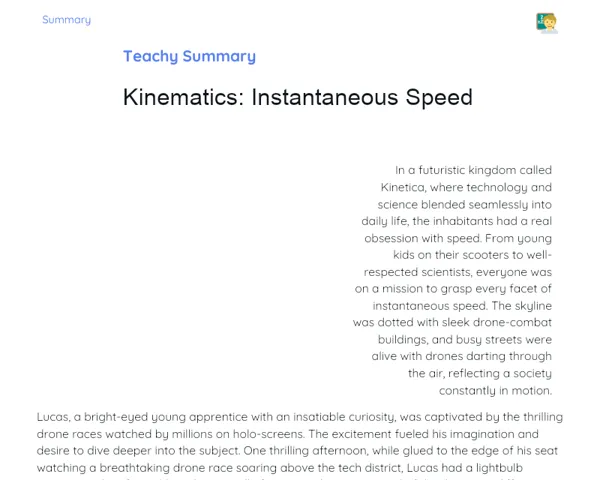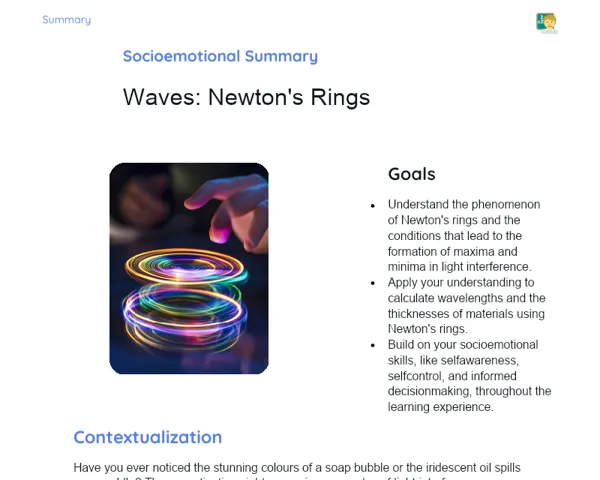Objectives
1. 🚀 Master the concept of Impulse and Momentum and how they apply in collision scenarios.
2. 🔍 Identify and solve practical problems involving the conservation of momentum.
3. 🔧 Apply the impulse theorem to understand and predict changes in the momentum of objects in various scenarios.
Contextualization
Did you know that momentum plays a vital role in safety features like airbags? These mechanisms inflate rapidly during a vehicle collision, extending the time of impact and thereby reducing the force experienced by the occupants. This technology is a prime example of how the principles of momentum physics are crucial in saving lives out there on the roads!
Important Topics
Impulse
Impulse refers to the change in momentum of an object resulting from a collision. It's calculated by multiplying the force applied by the duration of that force. In formula terms, impulse (J) = F × Δt, where F is the force and Δt is the time period. This concept is fundamental in understanding how forces alter the velocity and direction of objects in brief moments, like in collisions or explosions.
-
Impulse is a vector, meaning it has both direction and magnitude, matching the direction of the applied force.
-
In the SI system, impulse is measured in Newton-seconds (N·s).
-
Grasping impulse is essential for engineering safety systems like airbags, which need to absorb collision energy to lessen the impact felt by passengers.
Momentum
Momentum, often referred to as linear momentum, is the product of an object's mass and its velocity. This principle is important for determining momentum conservation in isolated systems; the total momentum before and after a collision remains unchanged, provided no external forces are at play. The formula for momentum (P) is P = m × V, where m represents mass and V represents velocity.
-
Momentum is also a vector quantity, so it has direction and magnitude.
-
In collisions, understanding momentum conservation helps predict how objects will move after colliding, without needing to know the forces at play internally.
-
This principle is a cornerstone of mechanics and has applications across various fields, including engineering, particle physics, and astronomy.
Conservation of Momentum
The conservation of momentum is a core tenet in physics which states that in a closed system, the total momentum is conserved unless acted upon by external forces. This principle is invaluable when analyzing collisions and other interactions, as it streamlines calculations and enables reliable predictions of how objects will behave.
-
This principle is relevant when external forces are absent, which is common in controlled experiments and theoretical models.
-
Momentum conservation does not hold if external forces (like friction or applied forces from outside) impact the system.
-
Understanding this principle fosters better problem-solving skills in students and applies theoretical knowledge in practical situations.
Key Terms
-
Impulse: The change in momentum of an object caused by a force over a period of time.
-
Momentum: A measure of an object's motion, computed by the product of its mass and velocity.
-
Conservation of Momentum: A principle asserting that total momentum in an isolated system remains constant barring external forces.
For Reflection
-
How can we use the principle of conservation of momentum to predict outcomes in car crashes?
-
Why is it important to understand impulse when designing safety systems like airbags?
-
In what ways could the momentum of an object be changed without external influences?
Important Conclusions
-
We've delved into the concepts of Impulse and Momentum, and how they factor into collision scenarios, especially the conservation of momentum in isolated systems.
-
We’ve established that impulse arises from applying a force over a time frame, critical for understanding how force affects the velocity of objects.
-
We’ve recognized momentum as the product of mass and velocity, and how its conservation makes analyzing collisions simpler in closed systems.
To Exercise Knowledge
- Collision Simulation: Utilize an online collision simulator to predict and observe how different types of collisions (elastic and inelastic) behave. 2. Automotive Safety Project: Design a prototype safety system for a vehicle that uses momentum conservation principles to lessen impact during collisions. 3. Billiards Experiment: Set up a mini billiards table to see how the mass and speed of the balls affect collisions, confirming momentum conservation.
Challenge
Create a video explaining how the conservation of momentum applies in a common scenario, such as a collision between toy cars, and share your findings and calculations.
Study Tips
-
Practice solving problems related to collisions and momentum conservation to enhance your comprehension.
-
Engage with online simulations and interactive exercises to visualize and experiment with impulse and momentum concepts.
-
Discuss how the conservation of momentum principle can be applied in everyday situations, like sports or accidents, with your classmates.



